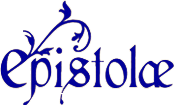Elisabeth of Schoenau
Overview
Biography
Elisabeth was born into a family probably of the minor nobility which gave several members to the church, one great uncle a bishop, a brother and a nephew abbots, another brother a prior, female relatives nuns at Schönau and at Andernach, Elisabeth herself a magistra (the presiding nun in a combined monastery of men and women under the rule of an abbot) at Schönau. Elisabeth entered the Benedictine double monastery at age 12 in 1157, and her brother Ekbert joined her there in about 1155 as her secretary, and after her death as abbot (from 1167). Elisabeth began to have visions in 1152, a year after Hildegard of Bingen published her first book of visions, the Scivias, a work which seems to have influenced Elisabeth. They exchanged some letters and Elisabeth visited Hildegard at Rupertsberg in 1156. At first Elisabeth was reticent about her visions but, as she relates in a letter to Hildegard (Epistolae 123.html)— an angel insisted forcefully that she reveal them and preach penance, which she did at first through her abbot Hildelin. After Ekbert came to Schönau, he collected and perhaps edited the visions in six books, and he may have directed her interest towards more theological questions. The six books are three [unnamed] books of visions, “visionary diaries,” the Liber viarum dei (Book of the Ways of God), the Liber revelationum Elisabeth de sacro exercitu virginum Coloniensium (Book of the Revelations of Elisabeth about the Holy Army of the Virgins of Cologne) about Ursula and the 11,000 virgins, and the letters. Elisabeth’s controversial Visio de resurrectione beate virginis Mariae (on the resurrection of the Virgin Mary) which had circulated on its own was eventually attached to the second book of visions. Ekbert also added a description of her death (De Obitu). Elisabeth’s visions were sought before and after the fact — some people sent her questions to be answered in visions, some read and copied the written versions, not only in her own part of Germany, but in France and England as well.(1) The sixth book, which contains most of the extant letters, includes an introductory explanation by Ekbert of how the letters came to be written: "From the diocese of Metz, from an abbey in Busendorf, a monk who was very learned in sacred letters came to visit Elisabeth and investigate what God was doing with her. After he had heartily wished her joy and faithfully instructed her with good advice, when he was about to leave, he asked that he might be worthy at some point to receive a letter from her. The letter was to be of that same grace from which she had in ecstasy pronounced other things, a letter from which his mind could glean some correction and good consolation. At the same time he also asked that she send a letter advising his abbot and brothers about correcting their lives. When Elisabeth had reverently commended this to divine grace, on the night after his request, while she was at Matins, suddenly and unexpectedly she announced the letter which that brother had requested to be sent to him. Similarly, on the third night after this she announced the other letter which he had asked to be sent to his abbot and brothers. From this time, she began to have the grace of announcing letters of the kind which are transcribed below." (2)
Letters from Elisabeth of Schoenau
A letter to Burchard, abbot of Odenheim and his brothersA letter to Burchard, abbot of Odenheim and his brothers
A letter to Fulbert, abbot of Laach
A letter to Gerlach, the abbot of Deutz
A letter to Gerlach, the abbot of Deutz
A letter to Gerlach, the abbot of Deutz and his brothers
A letter to Guda, abbess of St. Thomas of Andernach
A letter to Hildegard of Bingen
A letter to Hildegard of Bingen
A letter to Hillin, archbishop of the city of Trier
A letter to Ludwig, monk, later abbot of Saint Eucharius in Trier
A letter to R
A letter to Reinhard, abbot of Reinhausen
A letter to sisters of the Holy Virgins in Cologne
A letter to the abbess of Dietkirchen
A letter to the abbess of Dietkirchen
A letter to the abbot of Busendorf
A letter to the archbishops of Trier, Cologne, and Mainz
A letter to the brothers in Nuwinburg
A letter to the sisters at Andernach
A letter to the sisters at Bonn
A letter to the sisters in Dirstein

